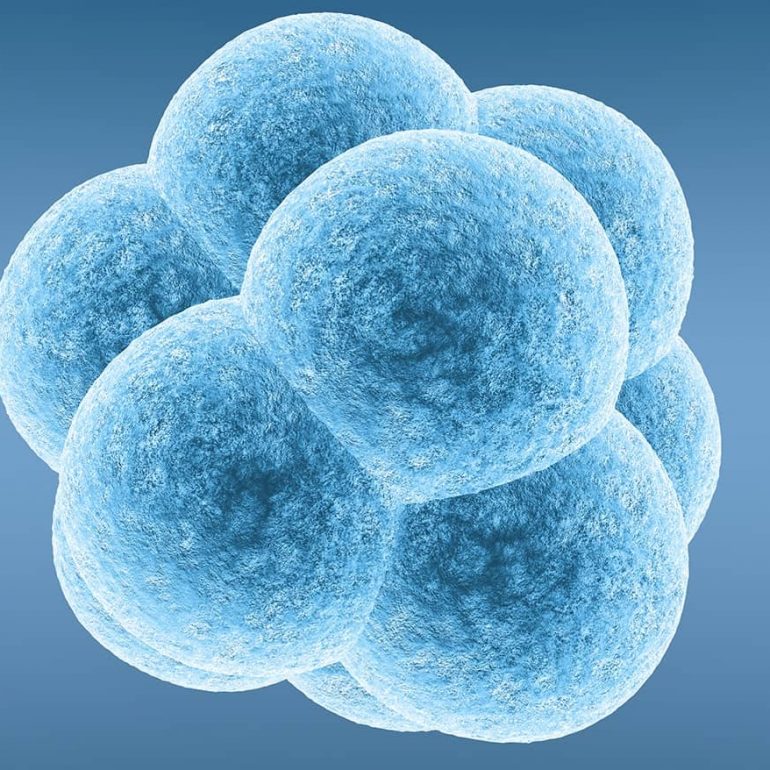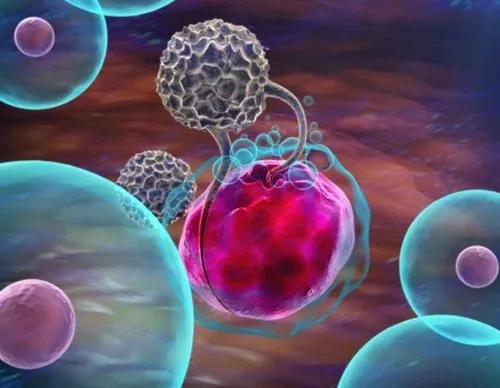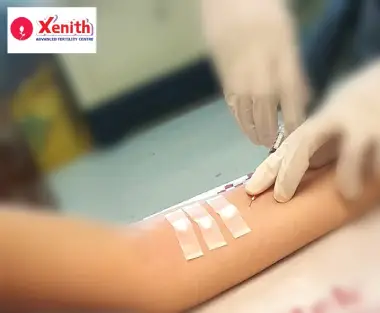Xenith Hope Circle
Join our new WhatsApp community
Introduction to Blastocyst Transfer
Blastocyst transfer is a critical step in the IVF (In Vitro Fertilization) process, where an embryo, typically at the blastocyst stage, is transferred into the uterus. A blastocyst is an embryo that has developed for about five days after fertilization and contains around 200 cells, which are ready for implantation.
What is a Blastocyst?
A blastocyst is a key stage in embryo development, occurring about 5-6 days post-fertilization. During this stage, the embryo comprises two distinct cell types—the inner cell mass, which will eventually develop into the fetus, and the outer layer, known as the trophoblast, which forms the placenta.
The Procedure of Embryo Transfer
The embryo transfer procedure typically occurs on the fifth day of embryo development when the embryo has reached the blastocyst stage. This stage is critical because it significantly increases the chances of successful implantation. The procedure is minimally invasive and involves placing the blastocyst into the uterus using a thin catheter.
Day-by-Day Embryo Development Post Transfer
After the blastocyst transfer, the embryo undergoes a series of developmental changes:
Day 1-2: The blastocyst continues to grow and prepares for implantation.
Day 3-4: The embryo starts to attach itself to the uterine wall, beginning the implantation process.
Day 5-6: Full implantation occurs, and the embryo begins to receive nutrients directly from the mother’s bloodstream.
Day 7-10: The embryo further develops, and hCG hormone levels begin to rise, which can be detected through blood tests to confirm pregnancy.
ExcellentBased on 306 reviews Trustindex verifies that the original source of the review is Google.
Trustindex verifies that the original source of the review is Google. Baisakhi Biswas05/06/2025Amazing experience with Xenith wakad centre.All the doctors and nurses, staffs are very good, their behaviour is so polite. Mamta ma'am and her team bring the best news of my life.Thank you all 😊Trustindex verifies that the original source of the review is Google.
Baisakhi Biswas05/06/2025Amazing experience with Xenith wakad centre.All the doctors and nurses, staffs are very good, their behaviour is so polite. Mamta ma'am and her team bring the best news of my life.Thank you all 😊Trustindex verifies that the original source of the review is Google. Khetan Ganvir03/06/2025We are incredibly grateful to Xenith Advance Fertility Center, Wakad for making our dream come true. After a long journey, my wife conceived successfully through their expert care and guidance, and we are now expecting twins! Dr. Mamta Dighe and Dr. Pooja Chalukya were highly knowledgeable, compassionate, and supportive throughout the process. The staff made us feel comfortable and hopeful every step of the way. Their state-of-the-art facilities and personalized approach made a real difference. We couldn’t be happier with the outcome and highly recommend Xenith Advance Fertility Center to anyone struggling with infertility. Thank you for helping us start this beautiful new chapter in our lives!Trustindex verifies that the original source of the review is Google.
Khetan Ganvir03/06/2025We are incredibly grateful to Xenith Advance Fertility Center, Wakad for making our dream come true. After a long journey, my wife conceived successfully through their expert care and guidance, and we are now expecting twins! Dr. Mamta Dighe and Dr. Pooja Chalukya were highly knowledgeable, compassionate, and supportive throughout the process. The staff made us feel comfortable and hopeful every step of the way. Their state-of-the-art facilities and personalized approach made a real difference. We couldn’t be happier with the outcome and highly recommend Xenith Advance Fertility Center to anyone struggling with infertility. Thank you for helping us start this beautiful new chapter in our lives!Trustindex verifies that the original source of the review is Google. Nikita Badgujar30/05/2025Very Good experience, Entire team is very co-operative.Environment is also good.Trustindex verifies that the original source of the review is Google.
Nikita Badgujar30/05/2025Very Good experience, Entire team is very co-operative.Environment is also good.Trustindex verifies that the original source of the review is Google. Shraddha Borse30/05/2025I had a truly positive experience at Xenith. From the moment I walked in, I felt comfortable and well taken care of. The Doctors & staff was friendly, efficient, and always willing to helpTrustindex verifies that the original source of the review is Google.
Shraddha Borse30/05/2025I had a truly positive experience at Xenith. From the moment I walked in, I felt comfortable and well taken care of. The Doctors & staff was friendly, efficient, and always willing to helpTrustindex verifies that the original source of the review is Google. Neha Pohankar27/05/2025We are deeply grateful to the entire team at Xenith Center Wakad for their incredible support and care throughout our journey. From the very first visit, we felt welcomed and understood. A heartfelt thank you to the doctor for their expert guidance, to the embryologist for their dedication behind the scenes, and to the receptionists and support staff for always being kind, patient, and encouraging. Your collective compassion and professionalism made all the difference, and we will always hold a special place in our hearts for this amazing team.Trustindex verifies that the original source of the review is Google.
Neha Pohankar27/05/2025We are deeply grateful to the entire team at Xenith Center Wakad for their incredible support and care throughout our journey. From the very first visit, we felt welcomed and understood. A heartfelt thank you to the doctor for their expert guidance, to the embryologist for their dedication behind the scenes, and to the receptionists and support staff for always being kind, patient, and encouraging. Your collective compassion and professionalism made all the difference, and we will always hold a special place in our hearts for this amazing team.Trustindex verifies that the original source of the review is Google. Yugandhara Chaudhari17/05/2025We are deeply grateful to the entire team at Xenith IVF Centre for helping us achieve our dream in the very first attempt. After going through multiple IVF failures, we began our treatment here last year — and this year, we are overjoyed to be blessed with a baby. Our heartfelt thanks to Dr. Mamata Dighe, Dr. Pooja Chalukya, and Dr. Poonam for their exceptional care, expert guidance, and personal attention throughout our journey. Their confidence, patience, and transparent communication helped calm our anxieties and brought us immense comfort. The nursing staff has been consistently kind, attentive, and compassionate at every step — always present, always supportive. We’re also thankful to the reception team, who were approachable and available even during emergencies and after hours. Our experience at Xenith has been nothing short of incredible. Thank you all for being such a vital part of this life-changing journey.Trustindex verifies that the original source of the review is Google.
Yugandhara Chaudhari17/05/2025We are deeply grateful to the entire team at Xenith IVF Centre for helping us achieve our dream in the very first attempt. After going through multiple IVF failures, we began our treatment here last year — and this year, we are overjoyed to be blessed with a baby. Our heartfelt thanks to Dr. Mamata Dighe, Dr. Pooja Chalukya, and Dr. Poonam for their exceptional care, expert guidance, and personal attention throughout our journey. Their confidence, patience, and transparent communication helped calm our anxieties and brought us immense comfort. The nursing staff has been consistently kind, attentive, and compassionate at every step — always present, always supportive. We’re also thankful to the reception team, who were approachable and available even during emergencies and after hours. Our experience at Xenith has been nothing short of incredible. Thank you all for being such a vital part of this life-changing journey.Trustindex verifies that the original source of the review is Google. nikhil16/05/2025The entire team at Xenith was very helpful and paid attention to details and patient’s need and concerns. Thanks to their constant support. Would highly recommend the facility.Trustindex verifies that the original source of the review is Google.
nikhil16/05/2025The entire team at Xenith was very helpful and paid attention to details and patient’s need and concerns. Thanks to their constant support. Would highly recommend the facility.Trustindex verifies that the original source of the review is Google. Shweta Dervankar15/05/2025Excellent journey......we got a positive result.....we tried a lot outside but was disappointed.....in xenith Dr. Mamta ma'am give us a hope and bring happiness in our life.....strongly recommending Xenith..... Thank you so much team...... Must visit for your infertility problem.Trustindex verifies that the original source of the review is Google.
Shweta Dervankar15/05/2025Excellent journey......we got a positive result.....we tried a lot outside but was disappointed.....in xenith Dr. Mamta ma'am give us a hope and bring happiness in our life.....strongly recommending Xenith..... Thank you so much team...... Must visit for your infertility problem.Trustindex verifies that the original source of the review is Google. Mayuri Darwade14/05/2025I would like to express my sincere gratitude to the entire team at Xenith IVF Centre for making our dream come true in the very first attempt. A special thanks to Dr. Mamata Dighe, Dr. Pooja Chalukya, and Dr. Poonam for their expert care, guidance, and personal attention throughout the journey. Their confidence, patience, and clear communication helped ease all our worries and gave us great comfort. The nursing staff has been extremely kind, responsive, and caring at every stage, always available, and always supportive. I’d also like to thank the reception staff, who have been readily available even during emergencies and after hours. We had a very positive and reassuring experience at Xenith. Thank you all for being such a wonderful part of this life-changing journey.Trustindex verifies that the original source of the review is Google.
Mayuri Darwade14/05/2025I would like to express my sincere gratitude to the entire team at Xenith IVF Centre for making our dream come true in the very first attempt. A special thanks to Dr. Mamata Dighe, Dr. Pooja Chalukya, and Dr. Poonam for their expert care, guidance, and personal attention throughout the journey. Their confidence, patience, and clear communication helped ease all our worries and gave us great comfort. The nursing staff has been extremely kind, responsive, and caring at every stage, always available, and always supportive. I’d also like to thank the reception staff, who have been readily available even during emergencies and after hours. We had a very positive and reassuring experience at Xenith. Thank you all for being such a wonderful part of this life-changing journey.Trustindex verifies that the original source of the review is Google. J P30/04/2025We had a truly wonderful experience with Mamta Ma’am and her amazing team. From start to finish, everyone was kind, supportive, and genuinely caring. A heartfelt thank you to Pooja Ma’am, who was always just a call away whenever we had questions or needed guidance. Thanks to their expertise and constant support, we achieved a positive outcome. Highly recommended to anyone going through this journey—you’ll be in the best hands!
J P30/04/2025We had a truly wonderful experience with Mamta Ma’am and her amazing team. From start to finish, everyone was kind, supportive, and genuinely caring. A heartfelt thank you to Pooja Ma’am, who was always just a call away whenever we had questions or needed guidance. Thanks to their expertise and constant support, we achieved a positive outcome. Highly recommended to anyone going through this journey—you’ll be in the best hands!
Success Rates of 5-Day Blastocyst Transfer
Blastocyst transfer may increase the chances of success but it’s best to discuss with your consultant whether a day3 or blastocyst (day5) transfer would be better for you as it must be individualised.
The Role of Frozen Blastocyst Transfers
Frozen blastocyst transfers offer flexibility, allowing embryos to be preserved and transferred at a later date. The success rates for frozen blastocyst transfers are comparable to fresh transfers, making them a viable option for many patients.
Frequently Asked Questions
A blastocyst is a more developed form of an embryo, typically reached by day five, offering a higher chance of successful implantation.
A blastocyst contains around 200 cells, making it more complex and developed compared to earlier-stage embryos.
Implantation typically begins 3-4 days post-transfer, with full implantation occurring by day 6-7.
Conclusion
Blastocyst transfer is a pivotal step in the IVF process, offering higher chances of implantation and successful pregnancy. Understanding the procedure, the day-by-day development of the embryo, and the success rates can help patients make informed decisions about their IVF journey. Whether you’re considering fresh or frozen embryo transfer, the blastocyst stage is a promising option in the path to parenthood.
Why Choose Xenith?
- Patient-centered care
- Specialty in Recurrent IVF Failures
- Focus on interventions
- High IVF success rates
- High Clinical Standard
- All treatments under one roof
Book Appointment Today!
Recent Posts

Can Diabetes Cause Retrograde Ejaculation? Here’s What You Need to Know
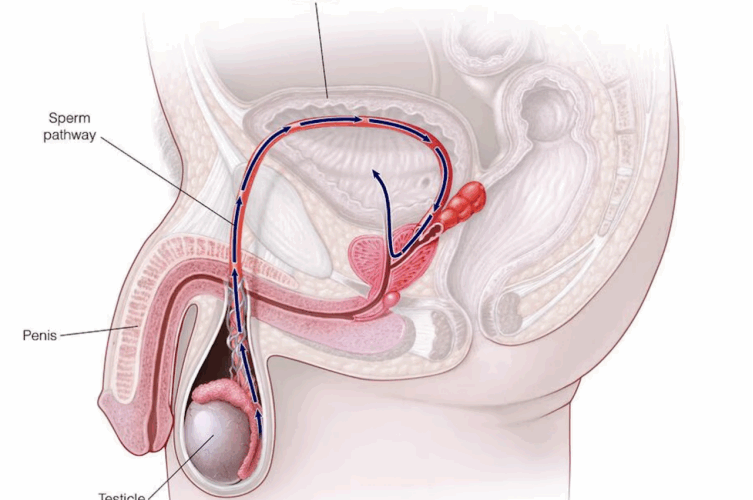
How to Reverse Retrograde Ejaculation Naturally and Medically
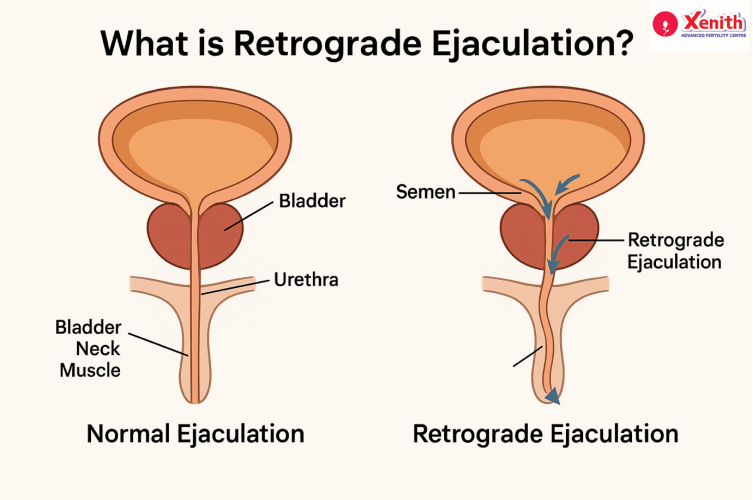
Retrograde Ejaculation and Male Infertility: A Complete Guide


